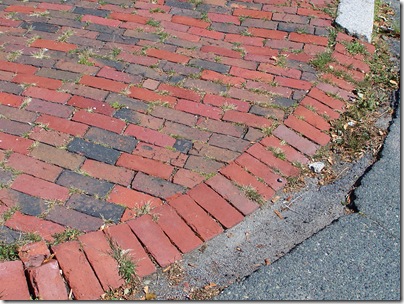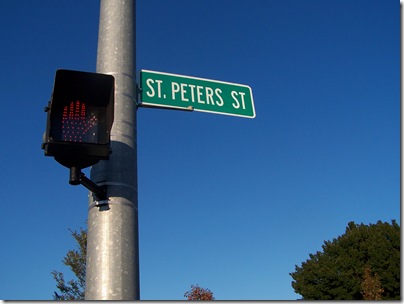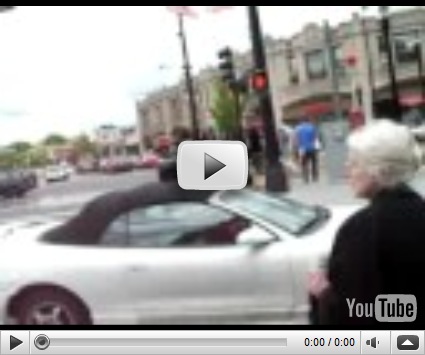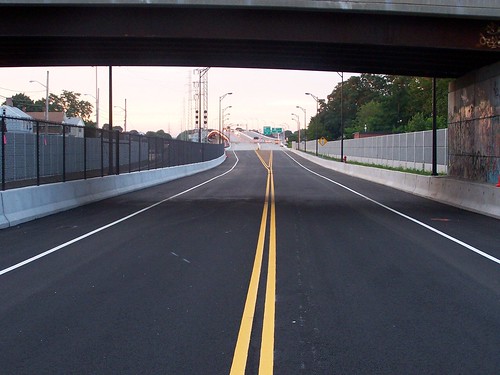[Sidewalk curb cut outside the Knights of Columbus Hall. This was scheduled to be repaired around Sept. 20th, due to the steep dropoff and gap between the sidewalk and the street.]
The Salem Gazette writes about an initiative by the city to improve sidewalks for people with disabilities. I’ve blogged this before, but it’s in the media now.
There’s no denying that Salem’s rippling brick sidewalks and bumpy cobblestone streets are quaint, but how accommodating are they for people with physical handicaps?
Not very, says Salem’s Commission on Disabilities (SCD). At the commission’s request the city has begun constructing several downtown streets to carve out small sidewalk ramps, called curb cuts, that enable people to more easily reach street level.
The majority of the curb cuts are being installed along Essex and Washington streets at about eight different locations including in front of the Salem Public Library. More will be constructed in coming months along Lafayette Street near Salem State College. According to city officials, construction will be complete in time for Halloween to greet incoming tourists.
The Commission has long had mixed feelings about brick sidewalks. When they’re new, they’re as easy to navigate as concrete sidewalks. When they’re old, not as much.
Worst, as usual, are the cobblestones on Essex St. downtown:
Charlie Reardon, 73, is happy to see these changes but say that downtown streets still remain a problem. Walking with a cane, Reardon has trouble navigating the cobblestone areas of the Essex Street pedestrian mall, especially during events when merchants set up tents along the brick sidelines.
“I try to stay to the right or left … but pedestrians often occupy this and it makes it hard to get around,” he says. “And God help the poor soul in a wheelchair. Those cobblestones jar your insides out.”
I’ll spell this out so people can understand. The downtown you see today is not the one in McIntyre’s day. It is a simulation. It was built in 1976 in an downtown revival fad that attempted to revitalize areas by making them pedestrian-only areas. The cobblestones were there to make it appear historic.
They’re not authentic.
They’ve caused more problems with pedestrian traffic flow downtown than any other architectural element. The Commission regularly has to monitor pedestrian flow and wheelchair access during Haunted Happenings, and our work would be much easier without those stones.
Before you post the inevitable comments telling me to move, consider:
“This is a large tourist city,” Andrew LaPointe, a member of the SCD, points out. “There are 50,000 people in the nation who are disabled … A lot of them come to Salem … We are trying to make the city more comfortable for them.”
The ankle not sprained by a cobblestone may be your own.
In other good news, the Witch House is being made accessible. The entrance and several important passages are being widened for chairs. It won’t be done in time for this Halloween, but it should be ready by tourist season next spring.




